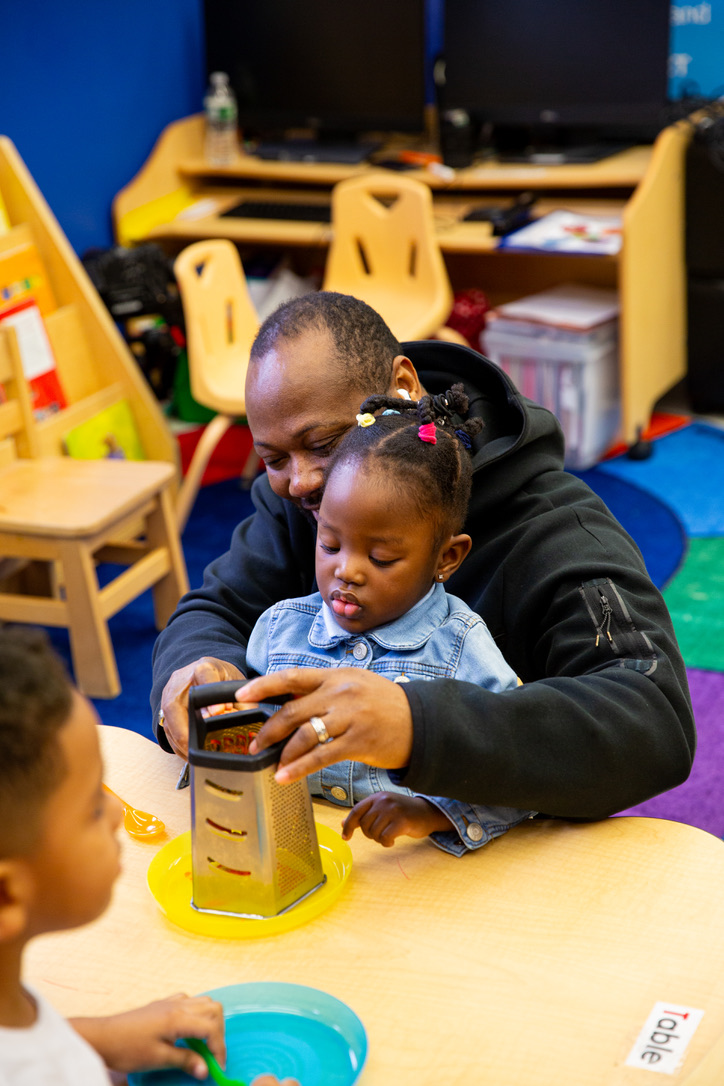Five No-Fail Parent Engagement Strategies for Family Wide Food Behavior Change

Think parents will read your newsletter or handout about the food education at their child’s school and take action by cooking more healthy meals at home? Think again. Like their children, parents need more than written communications to engage and contemplate making real change. They are busy. They love to hear that their kids are trying out broccoli or dipping fennel into hummus. But that does not mean they will be buying fennel or making fresh hummus.
So how do school healthy eating programs get parents to take action and reinforce food-based nutrition education at home? After decades of exploring this question and measuring our success, we have some no-fail strategies to share for practitioners of programs serving children of all ages.
Early childhood programs:
- Invite their participation. Choose a regular, planned hands-on food education session with youngsters and move the timing to drop off so parents can stay and engage. Once they experience what their child is doing with food, they can understand this is more than ‘edutainment’ and they will likely consider ways to model your program techniques at home.
- Motivate with poll questions. To get parents to that ‘aha’ moment, so they realize you are demonstrating valuable ways for them to explore healthy ingredients at home, take an exit poll. Example: “After today’s experience, would you be willing to try having your child help cook at home?“
Elementary programs:
- Make family cooking a school event. When a healthy cooking activity is embraced by an entire school community, engaged in together, it serves to normalize the idea of family cooking. Even if it’s only engaged in once a year, by making a meal together, parents and children, and then sitting down and engaging in dinner conversation, children want more. Their poster pressure is likely to result in repetition at home.
- Extend the concept home. The next step is to assign a family cooking activity – for homework! This will get the kids very excited and parents can’t say ‘no’ to homework. Now they are practicing what they did at school at home. Chances are, assigning a cooking activity for homework will lead to kids begging to do it again and again. In fact it’s very likely that most parents will be willing to repeat some cooking together even when it’s not a homework assignment. Mission accomplished. Parents engaged.
Adolescent programs:
- Cater to parents. With adolescents, who have much more autonomy, we can turn the tables and engage parents through their stomachs. Teens who’ve learned to do some healthy cooking can then be asked to go home and cook a lovely meal for their families. Importantly, this must include ALL the cleanup! Having one’s adolescent son or daughter make a lovely meal and leave a sparkling clean kitchen is a form of seduction. You can bet those parents will want to see that happen again.
The secret sauce of parent engagement
So what do all these parent engagement strategies have in common? They are all active and experiential. A minimum of information sent home and replaced by maximum family involvement. Older children help little ones, little ones look up to older children. Family bonds are strengthened. Everyone wants to sit at the same table out of appreciation for the work that went into the meal. By getting kids so hooked on cooking healthy scratch meals, which they perceive as part of the adult world, odds are it will be the kids who drive the push to repeat the experience. And that, in fact, is the secret sauce of parent engagement: let kids take the lead.

